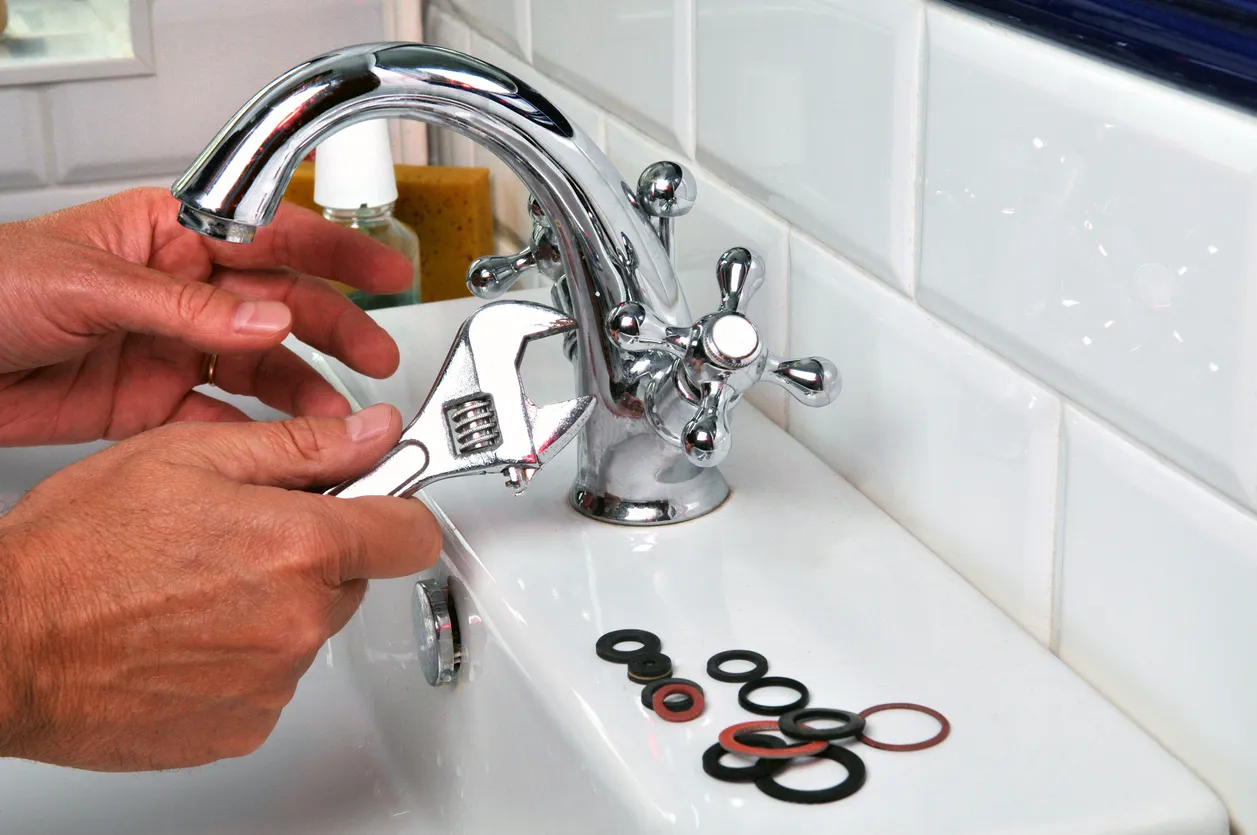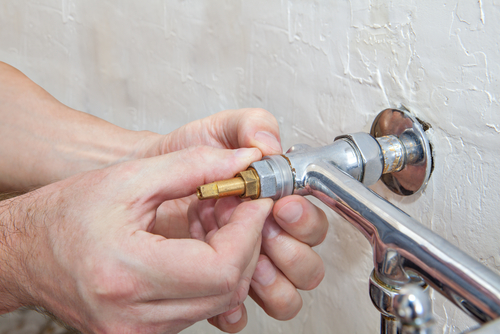Why It's Mandatory to Fix a Dripping Faucet
Why It's Mandatory to Fix a Dripping Faucet
Blog Article
We've found the article about Why It's Important to Fix Leaky Faucets listed below on the web and figured it made perfect sense to relate it with you here.

Trickling faucets may seem like a small inconvenience, however their effect goes beyond just the inconvenience of the noise. From drainage to sustaining unneeded monetary prices and health risks, overlooking a leaking faucet can bring about different effects. In this write-up, we'll explore why it's important to address this usual family issue promptly and successfully.
Waste of Water
Ecological Influence
Dripping faucets add substantially to water wastefulness. According to the Epa (EPA), a solitary tap dripping at one drip per second can throw away more than 3,000 gallons of water each year. This not just strains water resources however additionally affects environments and wild animals depending on them.
Step-by-Step Guide to Taking Care Of a Dripping Tap
Devices Called for
Prior to trying to deal with a trickling tap, collect the essential devices, consisting of an adjustable wrench, screwdrivers, replacement components (such as washers or cartridges), and plumber's tape.
Usual Faucet Issues and Their Solutions
Determine the kind of tap and the specific problem triggering the drip. Usual troubles include worn-out washers, corroded shutoff seats, or damaged O-rings. Refer to maker guidelines or on-line tutorials for detailed advice on repairs.
Financial Costs
Enhanced Water Bills
Beyond the environmental impact, trickling taps can blow up water bills considerably. The gathered wastefulness gradually equates into greater energy expenses, which can have been prevented with timely fixings.
Prospective Residential Property Damages
Furthermore, long term leaking can lead to harm to fixtures and surface areas bordering the faucet. Water buildup can cause discoloration, corrosion, and even architectural issues if left neglected, resulting in extra repair work expenses.
Wellness Issues
Mold And Mildew and Mold Growth
The constant existence of dampness from a dripping faucet produces an excellent environment for mold and mildew development. These fungis not only compromise interior air top quality yet also present health threats, especially for people with respiratory problems or allergic reactions.
Waterborne Conditions
Stationary water in trickling taps can become a breeding place for germs and various other pathogens, boosting the danger of waterborne conditions. Contaminants such as Legionella bacteria flourish in stagnant water, potentially causing significant ailments when consumed or breathed in.
Do it yourself vs. Expert Repair service
Benefits and drawbacks of Do It Yourself Fixing
While some might attempt to repair a dripping tap themselves, do it yourself repair services include their own set of challenges. Without correct understanding and tools, do it yourself attempts can exacerbate the concern or result in insufficient repair services, prolonging the trouble.
Benefits of Working With an Expert Plumber
Working with a specialist plumber guarantees that the underlying source of the dripping tap is addressed successfully. Plumbers possess the expertise and devices to identify and fix tap issues effectively, conserving time and decreasing the danger of additional damages.
Ecological Duty
Specific Contribution to Conservation
Taking responsibility for repairing leaking faucets aligns with more comprehensive initiatives towards water conservation and environmental sustainability. Every individual's actions jointly make a considerable effect on preserving priceless resources.
Sustainable Living Practices
By focusing on prompt fixings and embracing water-saving practices, people contribute to lasting living methods that profit both present and future generations.
Safety nets
Normal Maintenance Tips
To stop dripping taps, perform regular upkeep such as cleaning aerators, evaluating for leaks, and replacing damaged parts without delay. In addition, consider setting up water-saving devices or upgrading to extra effective fixtures.
Value of Prompt Services
Resolving leaking faucets as soon as they're observed prevents additional water wastefulness and potential damage, eventually saving both water and cash over time.
Influence On Home Value
Understanding of Well-Maintained Residential Property
Preserving a property in good condition, consisting of resolving upkeep problems like dripping faucets, boosts its viewed value and desirability amongst prospective buyers or lessees.
Influence on Resale Worth
Qualities with well-kept plumbing components, consisting of faucets, command greater resale values in the realty market. Addressing trickling faucets can add to a favorable perception during property assessments and arrangements.
Final thought
Attending to a dripping faucet exceeds plain convenience; it's a vital action towards conserving water, decreasing monetary expenses, and securing health and wellness and residential property. Whether via do it yourself fixings or professional assistance, taking action to fix dripping faucets is a tiny yet impactful means to advertise accountable stewardship of sources and add to a healthier, more sustainable future.
How to Fix a Leaky Faucet: Step-by-Step Repair Guide
A leaky faucet may seem like a simple annoyance, but if it's not fixed promptly, that leak could cost hundreds to potentially thousands. From water damage to mold, mildew, and high water bills, even a tiny leak can be catastrophic if left unattended. Damage like this can even affect the overall value of your home, so it's important to take the right approach for leaky faucet repair. You may need the help of a plumber in some cases, but we've got a few tips you can try on how to fix a leaky faucet before calling the pros.
Four Faucet Types
When you're learning how to fix a leaky faucet, the first step is knowing what kind of faucet you're working with! There are four common types.
Cartridge Faucets
Cartridge faucets come in one- or two-handled varieties. In one-handled cartridge faucets, hot and cold water combines in a single cartridge. In the two-handled versions, hot and cold water are controlled separately and mixed in the faucet.
Ball Faucets
Ball faucets have a single lever you push up and down to adjust the pressure and rotate to change the temperature. A slotted metal ball controls the amount of water allowed into the spout.
Compression Washer Faucets
They're the oldest type of faucet, but they're still used in many homes — especially older ones. Compression faucets have two separate handles that, when turned, raise or lower the washer that seals a water valve. This valve stops water from flowing through the faucet when it is turned off.
Disc Faucets
Disc faucets rarely need to be repaired due to their maintenance-free design. The water flow is controlled by two discs — the upper one raises and lowers against a fixed lower disc, creating a watertight seal. If your disc faucet starts leaking, you may need to replace the seals or clean residue buildup from the inlets.
Fixing a Leaky Faucet
Step 1: Turn Off the Water
Whether you're learning how to fix a leaky bathtub faucet or how to fix a leaky kitchen faucet, always turn off the water supply to your working area when you're fixing a leak. The last thing you want is a flood added to your list of things to fix.
Look for the shutoff valves below your sink or around the tub and turn them clockwise to stop the water flow. If your faucet doesn't have shutoff valves, you may need to turn off the water for the whole house. Check to make sure it's off by turning the faucet on. If nothing comes out, you're ready to start the repair.
Step 2: Take Apart the Faucet
How you disassemble your faucet depends on the type of fixture you have. You can use a flathead screwdriver to remove the caps on top of the handle or handles for cartridge and compression faucets. Inside, you should see handle screws. Unscrew these with a screwdriver to remove the handle.
Disc- and ball-style faucets will typically have an inlet screw near the handle, and removing that will reveal the interior of the faucet.
Detach the Valve Stem
For cartridge- and compression-style faucets, you'll see the inner valve stem or cartridge once you remove the faucet handles. If you have a compression faucet, unscrew the brass valve stem. If you have a cartridge faucet, pull out the cartridge. If your cartridge has been in place for a while, it may require some tools or extra force to remove it due to mineral deposits.
Examine and Replace Parts
Once you've removed the parts, check them out to confirm what needs to be replaced. You may see corroded rubber washers, O-rings, stems, or cartridges. On a ball-style faucet, check the seats and springs for damage.
If you need to repair a leaky disc faucet, check the inlet and seals on the lower disc.
Once you determine what parts must be replaced, visit your local hardware store. Bring the damaged parts with you to ensure you can purchase the correct components to replace them.
Clean Valves and Faucet Cavity
If you've removed a stem or cartridge, you may notice mineral buildup in the faucet's threads. Use white vinegar to clean the valve seat by soaking it for a few minutes, then scrub it away with a soft toothbrush and rinse with warm water. You can also clean the interior of the faucet in the same way.
Reassemble the Faucet
Once your faucet is cleaned and the required parts have been replaced, it's time to reassemble it. Put the pieces back together and slowly turn the water supply back on. Doing this slowly is crucial because too much initial water pressure can damage the new hardware you've just installed.
https://homewarranty.firstam.com/blog/how-to-fix-leaky-faucet

Hopefully you liked our part about Why Is It Important To Fix Your Leaking Tap/Faucet?. Thanks for taking a few minutes to read through our piece of content. Are you aware of anybody else who is fascinated about the subject? Take a moment to share it. Thank you for being here. Come back soon.
Report this page